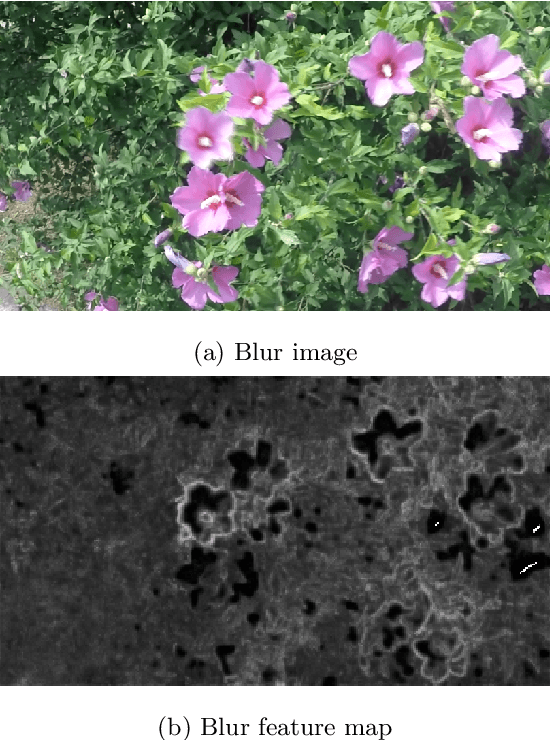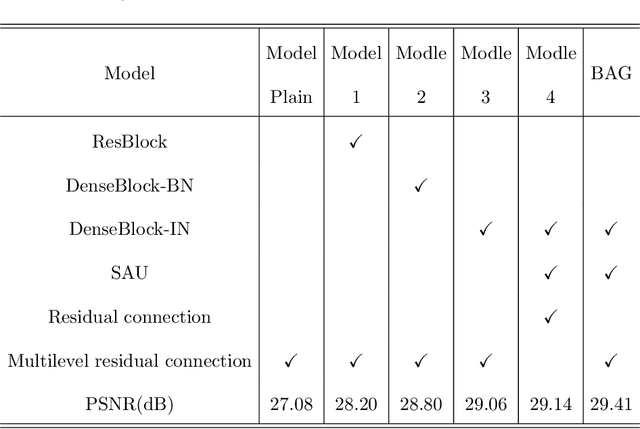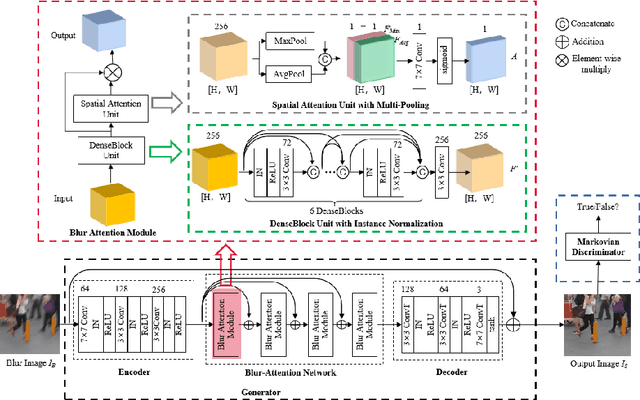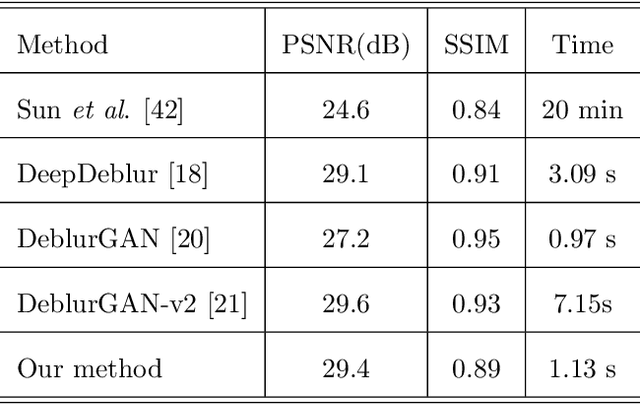Li Zhuo
TEFormer: Texture-Aware and Edge-Guided Transformer for Semantic Segmentation of Urban Remote Sensing Images
Aug 08, 2025Abstract:Semantic segmentation of urban remote sensing images (URSIs) is crucial for applications such as urban planning and environmental monitoring. However, geospatial objects often exhibit subtle texture differences and similar spatial structures, which can easily lead to semantic ambiguity and misclassification. Moreover, challenges such as irregular object shapes, blurred boundaries, and overlapping spatial distributions of semantic objects contribute to complex and diverse edge morphologies, further complicating accurate segmentation. To tackle these issues, we propose a texture-aware and edge-guided Transformer (TEFormer) that integrates texture awareness and edge-guidance mechanisms for semantic segmentation of URSIs. In the encoder, a texture-aware module (TaM) is designed to capture fine-grained texture differences between visually similar categories to enhance semantic discrimination. Then, an edge-guided tri-branch decoder (Eg3Head) is constructed to preserve local edges and details for multiscale context-awareness. Finally, an edge-guided feature fusion module (EgFFM) is to fuse contextual and detail information with edge information to realize refined semantic segmentation. Extensive experiments show that TEFormer achieves mIoU of 88.57%, 81.46%, and 53.55% on the Potsdam, Vaihingen, and LoveDA datasets, respectively, shows the effectiveness in URSI semantic segmentation.
FDC-Net: Rethinking the association between EEG artifact removal and multi-dimensional affective computing
Aug 07, 2025Abstract:Electroencephalogram (EEG)-based emotion recognition holds significant value in affective computing and brain-computer interfaces. However, in practical applications, EEG recordings are susceptible to the effects of various physiological artifacts. Current approaches typically treat denoising and emotion recognition as independent tasks using cascaded architectures, which not only leads to error accumulation, but also fails to exploit potential synergies between these tasks. Moreover, conventional EEG-based emotion recognition models often rely on the idealized assumption of "perfectly denoised data", lacking a systematic design for noise robustness. To address these challenges, a novel framework that deeply couples denoising and emotion recognition tasks is proposed for end-to-end noise-robust emotion recognition, termed as Feedback-Driven Collaborative Network for Denoising-Classification Nexus (FDC-Net). Our primary innovation lies in establishing a dynamic collaborative mechanism between artifact removal and emotion recognition through: (1) bidirectional gradient propagation with joint optimization strategies; (2) a gated attention mechanism integrated with frequency-adaptive Transformer using learnable band-position encoding. Two most popular EEG-based emotion datasets (DEAP and DREAMER) with multi-dimensional emotional labels were employed to compare the artifact removal and emotion recognition performance between ASLSL and nine state-of-the-art methods. In terms of the denoising task, FDC-Net obtains a maximum correlation coefficient (CC) value of 96.30% on DEAP and a maximum CC value of 90.31% on DREAMER. In terms of the emotion recognition task under physiological artifact interference, FDC-Net achieves emotion recognition accuracies of 82.3+7.1% on DEAP and 88.1+0.8% on DREAMER.
CWEFS: Brain volume conduction effects inspired channel-wise EEG feature selection for multi-dimensional emotion recognition
Aug 07, 2025Abstract:Due to the intracranial volume conduction effects, high-dimensional multi-channel electroencephalography (EEG) features often contain substantial redundant and irrelevant information. This issue not only hinders the extraction of discriminative emotional representations but also compromises the real-time performance. Feature selection has been established as an effective approach to address the challenges while enhancing the transparency and interpretability of emotion recognition models. However, existing EEG feature selection research overlooks the influence of latent EEG feature structures on emotional label correlations and assumes uniform importance across various channels, directly limiting the precise construction of EEG feature selection models for multi-dimensional affective computing. To address these limitations, a novel channel-wise EEG feature selection (CWEFS) method is proposed for multi-dimensional emotion recognition. Specifically, inspired by brain volume conduction effects, CWEFS integrates EEG emotional feature selection into a shared latent structure model designed to construct a consensus latent space across diverse EEG channels. To preserve the local geometric structure, this consensus space is further integrated with the latent semantic analysis of multi-dimensional emotional labels. Additionally, CWEFS incorporates adaptive channel-weight learning to automatically determine the significance of different EEG channels in the emotional feature selection task. The effectiveness of CWEFS was validated using three popular EEG datasets with multi-dimensional emotional labels. Comprehensive experimental results, compared against nineteen feature selection methods, demonstrate that the EEG feature subsets chosen by CWEFS achieve optimal emotion recognition performance across six evaluation metrics.
ADSEL: Adaptive dual self-expression learning for EEG feature selection via incomplete multi-dimensional emotional tagging
Aug 07, 2025Abstract:EEG based multi-dimension emotion recognition has attracted substantial research interest in human computer interfaces. However, the high dimensionality of EEG features, coupled with limited sample sizes, frequently leads to classifier overfitting and high computational complexity. Feature selection constitutes a critical strategy for mitigating these challenges. Most existing EEG feature selection methods assume complete multi-dimensional emotion labels. In practice, open acquisition environment, and the inherent subjectivity of emotion perception often result in incomplete label data, which can compromise model generalization. Additionally, existing feature selection methods for handling incomplete multi-dimensional labels primarily focus on correlations among various dimensions during label recovery, neglecting the correlation between samples in the label space and their interaction with various dimensions. To address these issues, we propose a novel incomplete multi-dimensional feature selection algorithm for EEG-based emotion recognition. The proposed method integrates an adaptive dual self-expression learning (ADSEL) with least squares regression. ADSEL establishes a bidirectional pathway between sample-level and dimension-level self-expression learning processes within the label space. It could facilitate the cross-sharing of learned information between these processes, enabling the simultaneous exploitation of effective information across both samples and dimensions for label reconstruction. Consequently, ADSEL could enhances label recovery accuracy and effectively identifies the optimal EEG feature subset for multi-dimensional emotion recognition.
Prototype Embedding Optimization for Human-Object Interaction Detection in Livestreaming
May 28, 2025Abstract:Livestreaming often involves interactions between streamers and objects, which is critical for understanding and regulating web content. While human-object interaction (HOI) detection has made some progress in general-purpose video downstream tasks, when applied to recognize the interaction behaviors between a streamer and different objects in livestreaming, it tends to focuses too much on the objects and neglects their interactions with the streamer, which leads to object bias. To solve this issue, we propose a prototype embedding optimization for human-object interaction detection (PeO-HOI). First, the livestreaming is preprocessed using object detection and tracking techniques to extract features of the human-object (HO) pairs. Then, prototype embedding optimization is adopted to mitigate the effect of object bias on HOI. Finally, after modelling the spatio-temporal context between HO pairs, the HOI detection results are obtained by the prediction head. The experimental results show that the detection accuracy of the proposed PeO-HOI method has detection accuracies of 37.19%@full, 51.42%@non-rare, 26.20%@rare on the publicly available dataset VidHOI, 45.13%@full, 62.78%@non-rare and 30.37%@rare on the self-built dataset BJUT-HOI, which effectively improves the HOI detection performance in livestreaming.
Embedded Multi-label Feature Selection via Orthogonal Regression
Mar 01, 2024Abstract:In the last decade, embedded multi-label feature selection methods, incorporating the search for feature subsets into model optimization, have attracted considerable attention in accurately evaluating the importance of features in multi-label classification tasks. Nevertheless, the state-of-the-art embedded multi-label feature selection algorithms based on least square regression usually cannot preserve sufficient discriminative information in multi-label data. To tackle the aforementioned challenge, a novel embedded multi-label feature selection method, termed global redundancy and relevance optimization in orthogonal regression (GRROOR), is proposed to facilitate the multi-label feature selection. The method employs orthogonal regression with feature weighting to retain sufficient statistical and structural information related to local label correlations of the multi-label data in the feature learning process. Additionally, both global feature redundancy and global label relevancy information have been considered in the orthogonal regression model, which could contribute to the search for discriminative and non-redundant feature subsets in the multi-label data. The cost function of GRROOR is an unbalanced orthogonal Procrustes problem on the Stiefel manifold. A simple yet effective scheme is utilized to obtain an optimal solution. Extensive experimental results on ten multi-label data sets demonstrate the effectiveness of GRROOR.
Blur-Attention: A boosting mechanism for non-uniform blurred image restoration
Aug 19, 2020



Abstract:Dynamic scene deblurring is a challenging problem in computer vision. It is difficult to accurately estimate the spatially varying blur kernel by traditional methods. Data-driven-based methods usually employ kernel-free end-to-end mapping schemes, which are apt to overlook the kernel estimation. To address this issue, we propose a blur-attention module to dynamically capture the spatially varying features of non-uniform blurred images. The module consists of a DenseBlock unit and a spatial attention unit with multi-pooling feature fusion, which can effectively extract complex spatially varying blur features. We design a multi-level residual connection structure to connect multiple blur-attention modules to form a blur-attention network. By introducing the blur-attention network into a conditional generation adversarial framework, we propose an end-to-end blind motion deblurring method, namely Blur-Attention-GAN (BAG), for a single image. Our method can adaptively select the weights of the extracted features according to the spatially varying blur features, and dynamically restore the images. Experimental results show that the deblurring capability of our method achieved outstanding objective performance in terms of PSNR, SSIM, and subjective visual quality. Furthermore, by visualizing the features extracted by the blur-attention module, comprehensive discussions are provided on its effectiveness.
A lateral semicircular canal segmentation based geometric calibration for human temporal bone CT Image
Jun 28, 2020



Abstract:Computed Tomography (CT) of the temporal bone has become an important method for diagnosing ear diseases. Due to the different posture of the subject and the settings of CT scanners, the CT image of the human temporal bone should be geometrically calibrated to ensure the symmetry of the bilateral anatomical structure. Manual calibration is a time-consuming task for radiologists and an important pre-processing step for further computer-aided CT analysis. We propose an automatic calibration algorithm for temporal bone CT images. The lateral semicircular canals (LSCs) are segmented as anchors at first. Then, we define a standard 3D coordinate system. The key step is the LSC segmentation. We design a novel 3D LSC segmentation encoder-decoder network, which introduces a 3D dilated convolution and a multi-pooling scheme for feature fusion in the encoding stage. The experimental results show that our LSC segmentation network achieved a higher segmentation accuracy. Our proposed method can help to perform calibration of temporal bone CT images efficiently.
 Add to Chrome
Add to Chrome Add to Firefox
Add to Firefox Add to Edge
Add to Edge